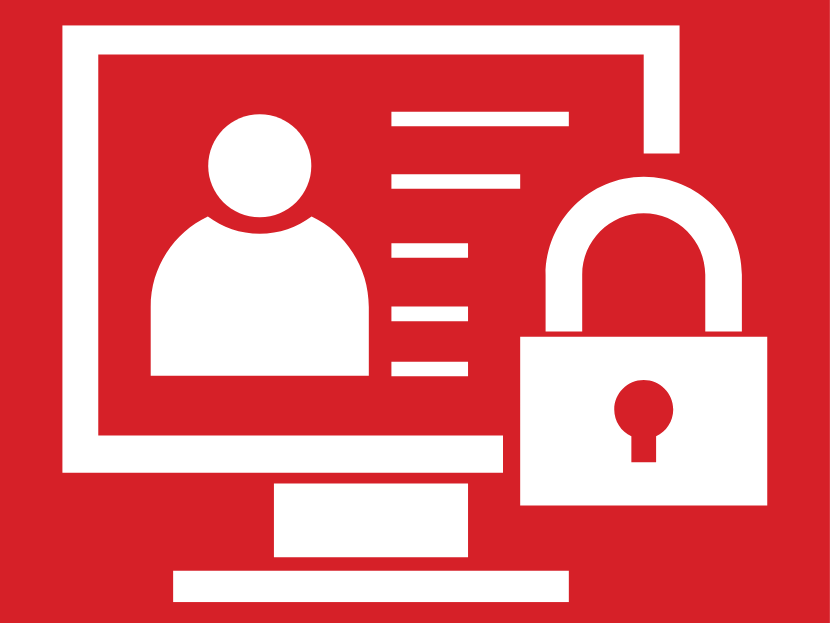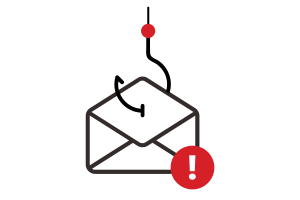LBTech Talk
IT Tips: Think Before You Click
IT Safety Tips
As technology becomes more integrated into our work and personal lives, the need for vigilance grows. It’s essential for everyone to play an active role in securing our networks. By staying informed, using strong passwords and being cautious with emails or links, we can help protect our systems and data. Follow the IT safety tips below to help keep yourself and all of LBT safe.

Five Tips to Prevent Scammers
October 2025

After a large internet outage, scammers are sending fake ‘service restore’ and ‘verify your account’ messages. If this happens, don’t click links in emails or texts about the outage – go directly to the service from your bookmarks or type the address. Never share Multi-Factor Authentication (MFA) codes with anyone, and report suspicious messages.
1. Don’t trust links or QR codes in outage-related messages, navigate to the link yourself.
2. Verify status at the official service status page by typing it in manually.
3. Treat any call or text message asking for MFA codes or “temporary passwords” as fraud.
4. Look for look-alike domains and odd subdomains (aws-support-restore[.]com, etc.).
General IT Safety Tips
1. Restart your computer at least once a week
Restarting helps your computer stay secure and run smoothly by installing updates, clearing temporary files, and preventing software glitches.
2. Timely reporting is a crucial part of security
If you notice anything suspicious, report it immediately. The longer an incident goes unreported, the more damage it can cause.
3. Social engineers hack people, not devices
Social engineers attempt to manipulate human emotions and convince people to make poor decisions. Remain skeptical, and never assume someone is who they claim to be.
4. Password hygiene is vital to securing accounts
A weak or reused password provides an opportunity for attackers to easily gain unauthorized access. Protect every account with a long, unique password.
5. Working from home comes with great responsibility
If you’re allowed to work from home, it’s your responsibility to make your home network secure. Ensure that your work and personal accounts remain separate.
Three Core Tips to Stay Safe Online
Stay safe online by following these three core tips – it’s as easy as remembering your wallet, watch and keys.
1. Wallet
Wallets your money and personal information. When it comes to online safety, your personal information is as valuable as your money. Just as you wouldn’t want your wallet stolen, you do not want to compromise the security of your personal information, so keep it protected and private.
2. Watch
Be on the watch and be careful. Look for red flags that could compromise your online security, including: phishing emails, links or attachments you weren’t expecting, and suspicious advertisements or requests on social media. Keep your operating system, antivirus, and other software up to date.
3. Keys
There is one lock between your online life and cybercriminals, and that is your password. Just as you wouldn’t hand the keys to your home over to a stranger, you should protect your password and ensure it is secure. When possible, also add multi-factor authentication.
Beware of Vishing (Voice Fishing) Attacks
June 2025
Voice phishing, or “vishing,” is when hackers call pretending to be IT or support staff.
1. Seeking Sensitive Information
Their goal is to trick you into giving up:
- Your passwords
- Multi-Factor Authentication codes
- Approving actions on your behalf
2. How to Protect Yourself
If you receive a call that sounds like vishing, keep these tips in mind to identify if it’s real or not:
- Ask the caller to send an internal chat or email to confirm identity
- Look up the support number yourself — don’t trust caller ID
- Never give Multi-Factor Authentication codes or approve logins unless you initiated them
3. Don’t Fall for Urgency Traps
Attackers want you to act fast—slow down and verify who you are talking to. If unsure, hang up and call IT back using a trusted number.
4. Use Secure Authentication
Use hardware security keys or official authenticator apps.
Smartphone Security
April 2025
Smartphones offer many conveniences in life but also house sensitive data, making them prime targets for cybercriminals. Protect your device by following these essential tips:
1. Avoid Malicious Apps
Only download apps from trusted sources, such as the Apple App Store or Google Play Store. Regularly review and remove apps you no longer use.
2. Be Cautious of Phishing Attempts
Phishing attacks can come via email or text, often appearing urgent or threatening. Be skeptical of messages requesting personal information or immediate action.
3. Secure Your Device
Utilize strong passwords, PINs, or biometric authentication methods such as fingerprint or facial recognition. Always lock your device when not in use.
4. Keep Software Updated
Regular updates help prevent security vulnerabilities. Enable automatic updates for your device and apps to ensure you have the latest protections.
Top Five Security Fundamentals
February 2025
1. Strong Passwords Are Vital to Security
It’s important that online accounts, especially those that contain confidential information, are never compromised. One way to ensure they are safe is to protect your account with a strong password that is long, unique, and adheres to LBT’s organizational requirements.
2. Social Engineers Hack People, Not Technology
Social engineering is the use of deception to con people into making costly mistakes. Social engineers create fake – yet, believable – scenarios designed to steal money or information. You can avoid falling for their scams by thinking critically and never making assumptions.
3. Phishing Attacks Remain the Top Threat
Phishing scams attempt to lure people into doing something they shouldn’t, such as opening a malicious link or attachment. These attacks are the top cause of malware (malicious software) infections, data theft, and other harmful consequences. Avoid them by slowing down and thinking before clicking.
4. Physical Security Is as Important as Cybersecurity
IT security efforts tend to focus on digital threats, such as phishing emails and malware. However, physical security deserves just as much attention. This includes locking devices when not in use and properly storing anything confidential.
5. Following Policy Helps Protect Everyone
Policies help maintain the security of everyone associated within LBT. They’re the guidelines that exist to minimize mistakes and mitigate threats targeting systems, data, and people. Following our policies and guidelines to keep safe is one of the easiest actions any individual can take.
Be On the Lookout for Phishing
1. Mysterious Messages
Phishing emails often appear to come from someone you know or trust. But they can also come from unknown senders. Always check the sender’s email address and make sure it matches the trusted source’s email address.
2. Urgent Demands
Phishing messages often direct you to take action immediately, implying that something negative will happen if you don’t. These messages are meant to get you to react before you think. Always stop and think before taking an action: does the request make sense?
3. Sneaky Links
One of the most common signs of phishing is the request to open an unexpected link or attachment. Malicious links or attachments can be used to steal your login information or other data. Never open links or attachments from unknown or suspicious senders. If you need to sign in to a website, go directly to the known, legitimate address.
4. Before taking an action: Stop, look, and think!
Does it seem suspicious, out of place, or just strange? Then report the message and delete it immediately!
Need assistance? IT is here to help!
Learn about the Information Technology Team and how to get help by visiting teamlbt.com/it.
